Earth Observation and Atmospheric science
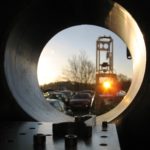
Atmospheric measurement campaign – Heliostat input into the spectrometer.
The accuracy of any hyperspectral, multispectral, and spectroscopic sensor (in-situ or remote) relies on accurate knowledge of the spectroscopic features being probed by the sensing system. The generation of accurate, traceable, and consistent reference data on spectrally resolved radiative properties of matter is therefore pivotal in making the most of Earth Observation and atmospheric science instrumentation relying on spectrally-resolved transmission, emission, or reflection data.
In addition to generating reference data, spectroscopic studies relate to a wide range of scientific issues in atmospheric and climate sciences: study of radiative forcing, characterization of continua absorption, collision-induced absorption, line-mixing effects, non-local thermodynamic equilibrium effects, spectral lineshape studies…
Our instruments are also used for atmospheric observation at very high resolution with the aim of contributing to international observation networks such as NDACC and TCCON.
Planetary sciences & Astronomy
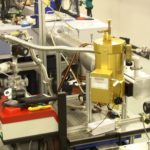
Measurement of water vapour reference spectroscopic data in the 10 – 12 cm-1 region.
Similarly to Earth observation, the remote sounding of planetary geophysical information or interstellar object informationalso requires reference spectral data to be gathered in the laboratory. Usually, whenever possible, it is preferable to collect spectral reference data under similar thermo-physical conditions to those expected of the object under study, which is a challenging task. To this end, spectrometers from the facility can be coupled to specific cells, flow systems, or sample conditioning apparatus.
Plasmas are the most abundant state of matter in the universe and gathering spectroscopic information on these is pivotal to develop understanding in astronomy, fundamental physics, science of the upper atmosphere, and in industrial applications such as material deposition.
Biosciences
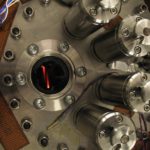
Pressure- and temperature-controlled White multipass cell.
The development of remote and in-situ sensing of the bio-sphere and the development of bio-photonics for life sciences and medicine requires the collection of dedicated spectral reference data and spectroscopic studies on living organisms. The facility can contribute to precision emission, transmission, reflection, and Raman spectroscopy of bio-samples in many forms.
Chemistry
High-resolution spectroscopy is a valuable tool to study chemical reactions. The facility spectrometers can be coupled to flow tube or pump and probe systems to study intermediates and products in a temporally resolved manner. Heterogeneous and surface chemistry is also relevant, for example in aerosols assisted reactions.
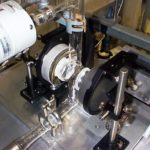
Flow tube cell coupled to a spectrometer for tropospheric ozone chemistry studies.
Measurements made at the facility can also contribute to the experimental validation of quantum chemistry models and ab-initio calculations.
Instrumentation / spectral calibration
Spectral instruments can be studied and characterized using the high resolution spectroscopy facility. The spectral response of instrument components (FPA for instance), instrument lineshape studies, spectral radiance calibration, studies of noise and drifts both in radiances and frequencies, testing and validation on representation samples are typical instrumentation activities in which the facility can contribute. Several remote sensing instruments have been calibrated in the facility, such as the AATSR focal plane array, SLSTR and MARSHALLS.
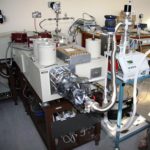
SpectralCcharacterization of AATSR focal plane array.
High-resolution emission spectroscopy and stability characterisation of a variety of laser types, super-continuum sources and discharge lamps has also been conducted.